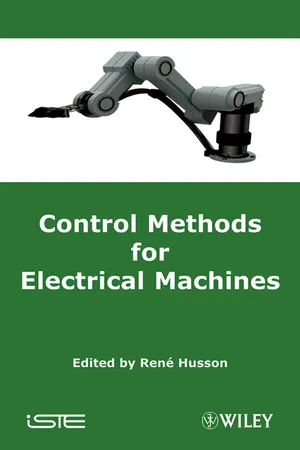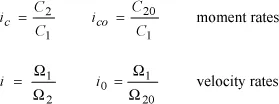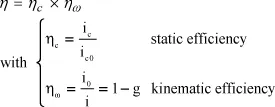
- English
- ePUB (mobile friendly)
- Available on iOS & Android
Control Methods for Electrical Machines
About this book
The type of control system used for electrical machines depends on the use (nature of the load, operating states, etc.) to which the machine will be put. The precise type of use determines the control laws which apply. Mechanics are also very important, because they affect performance.
Another factor of essential importance in industrial applications is operating safety. Finally, the problem of how to control a number of different machines, whose interactions and outputs must be coordinated, is addressed and solutions are presented.
These and other issues are addressed here by a range of expert contributors, each of whom are specialists in their particular field. This book is primarily aimed at those involved in complex systems design, but engineers in a range of related fields such as electrical engineering, instrumentation and control, and industrial engineering, will also find this a useful source of information.
Frequently asked questions
- Essential is ideal for learners and professionals who enjoy exploring a wide range of subjects. Access the Essential Library with 800,000+ trusted titles and best-sellers across business, personal growth, and the humanities. Includes unlimited reading time and Standard Read Aloud voice.
- Complete: Perfect for advanced learners and researchers needing full, unrestricted access. Unlock 1.4M+ books across hundreds of subjects, including academic and specialized titles. The Complete Plan also includes advanced features like Premium Read Aloud and Research Assistant.
Please note we cannot support devices running on iOS 13 and Android 7 or earlier. Learn more about using the app.
Information
Chapter 1
Overview of Mechanical Transmission Problems 1
1.1. Technological aspects
1.1.1. General structures of the machines
1.1.1.1. Engine
1.1.1.2. Loads
1.1.1.3. Energy efficiency








Table of contents
- Cover
- Title Page
- Copyright
- Preface
- Chapter 1: Overview of Mechanical Transmission Problems
- Chapter 2: Reminders of Solid Mechanics
- Chapter 3: Towards a Global Formulation of the Problem of Mechanical Drive
- Chapter 4: Continuous-time Linear Control
- Chapter 5: Overview of Various Controls
- Chapter 6: Sliding Mode Control
- Chapter 7: Parameter Estimation for Knowledge and Diagnosis of Electrical Machines
- Chapter 8: Diagnosis of Induction Machines by Parameter Estimation
- Chapter 9: Time-based Coordination
- Chapter 10: Multileaf Collimators
- Chapter 11: Position and Velocity Coordination: Control of Machine-Tool Servomotors
- List of Authors
- Index